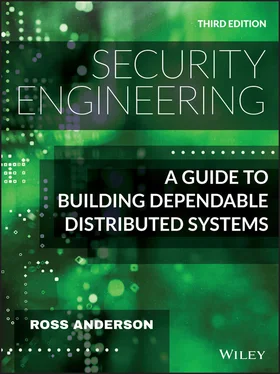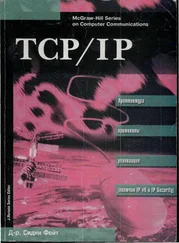But there are other applications in which collisions are unacceptable. When we design digital signature systems, we typically pass the message  through a cryptographic hash function first, and then sign the hash
through a cryptographic hash function first, and then sign the hash  , for a number of reasons we'll discuss later. In such an application, if it were possible to find collisions with
, for a number of reasons we'll discuss later. In such an application, if it were possible to find collisions with  but
but  , then a Mafia owned bookstore's web site might precalculate suitable pairs
, then a Mafia owned bookstore's web site might precalculate suitable pairs  , get you to sign an
, get you to sign an  saying something like “I hereby order a copy of Rubber Fetish volume 7 for $32.95” and then present the signature together with an
saying something like “I hereby order a copy of Rubber Fetish volume 7 for $32.95” and then present the signature together with an  saying something like “I hereby mortgage my house for $75,000 and please send the funds to Mafia Holdings Inc., Bermuda.”
saying something like “I hereby mortgage my house for $75,000 and please send the funds to Mafia Holdings Inc., Bermuda.”
For this reason, hash functions used with digital signature schemes have  large enough to make them collision-free. Historically, the two most common hash functions have been MD5, which has a 128-bit output and will thus require at most
large enough to make them collision-free. Historically, the two most common hash functions have been MD5, which has a 128-bit output and will thus require at most  computations to break, and SHA1 with a 160-bit output and a work factor for the cryptanalyst of at most
computations to break, and SHA1 with a 160-bit output and a work factor for the cryptanalyst of at most  . However, collision search gives at best an upper bound on the strength of a hash function, and both these particular functions have turned out to be disappointing, with cryptanalytic attacks that I'll describe later in section 5.6.2.
. However, collision search gives at best an upper bound on the strength of a hash function, and both these particular functions have turned out to be disappointing, with cryptanalytic attacks that I'll describe later in section 5.6.2.
To sum up: if you need a cryptographic hash function to be collision resistant, then you'd better choose a function with an output of at least 256 bits, such as SHA-2 or SHA-3. However if you only need to be sure that nobody will find a second preimage for an existing, externally given hash, then you can perhaps make do with less.
5.3.2 Random generators – stream ciphers
The second basic cryptographic primitive is the random generator , also known as a keystream generator or stream cipher . This is also a random function, but it's the reverse of the hash function in that it has a short input and a long output. If we had a good pseudorandom function whose input and output were long enough, we could turn it into a hash function by throwing away all but a few hundred bits of the output, and turn it into a stream cipher by padding all but a few hundred bits of the input with a constant and using the output as a keystream.
It can be used to protect the confidentiality of our backup data as follows: we go to the keystream generator, enter a key, get a long file of random bits, and exclusive-or it with our plaintext data to get ciphertext, which we then send to our backup service in the cloud. (This is also called an additive stream cipher as exclusive-or is addition modulo 2.) We can think of the elf generating a random tape of the required length each time he is presented with a new key, giving it to us and keeping a copy on his scroll for reference in case he's given the same input key again. If we need to recover the data, we go back to the generator, enter the same key, get the same keystream, and exclusive-or it with our ciphertext to get our plaintext back again. Other people with access to the keystream generator won't be able to generate the same keystream unless they know the key. Note that this would not give us any guarantee of file integrity; as we saw in the discussion of the one-time pad, adding a keystream to plaintext can protect confidentiality, but it can't detect modification of the file. For that, we might make a hash of the file and keep that somewhere safe. It may be easier to protect the hash from modification than the whole file.
One-time pad systems are a close fit for our theoretical model, except in that they are used to secure communications across space rather than time: the two communicating parties have shared a copy of a keystream in advance. Vernam's original telegraph cipher machine used punched paper tape; Marks describes how SOE agents’ silken keys were manufactured in Oxford by retired ladies shuffling counters; we'll discuss modern hardware random number generators in the chapter on Physical Security.
A real problem with keystream generators is to prevent the same keystream being used more than once, whether to encrypt more than one backup tape or to encrypt more than one message sent on a communications channel. During World War II, the amount of Russian diplomatic traffic exceeded the quantity of one-time tape they had distributed in advance to their embassies, so it was reused. But if  and
and  , then the opponent can combine the two ciphertexts to get a combination of two messages:
, then the opponent can combine the two ciphertexts to get a combination of two messages:  , and if the messages
, and if the messages  have enough redundancy then they can be recovered. Text messages do in fact contain enough redundancy for much to be recovered; in the case of the Russian traffic this led to the Venona project in which the US and UK decrypted large amounts of wartime Russian traffic from 1943 onwards and broke up a number of Russian spy rings. In the words of one former NSA chief scientist, it became a “two-time tape”.
have enough redundancy then they can be recovered. Text messages do in fact contain enough redundancy for much to be recovered; in the case of the Russian traffic this led to the Venona project in which the US and UK decrypted large amounts of wartime Russian traffic from 1943 onwards and broke up a number of Russian spy rings. In the words of one former NSA chief scientist, it became a “two-time tape”.
To avoid this, the normal engineering practice is to have not just a key but also a seed (also known as an initialisation vector or IV) so we start the keystream at a different place each time. The seed  may be a sequence number, or generated from a protocol in a more complex way. Here, you need to ensure that both parties synchronise on the right working key even in the presence of an adversary who may try to get you to reuse old keystream.
may be a sequence number, or generated from a protocol in a more complex way. Here, you need to ensure that both parties synchronise on the right working key even in the presence of an adversary who may try to get you to reuse old keystream.
5.3.3 Random permutations – block ciphers
The third type of primitive, and the most important in modern cryptography, is the block cipher, which we model as a random permutation . Here, the function is invertible, and the input plaintext and the output ciphertext are of a fixed size. With Playfair, both input and output are two characters; with DES, they're both bit strings of 64 bits. Whatever the number of symbols and the underlying alphabet, encryption acts on a block of fixed length. (So if you want to encrypt a shorter input, you have to pad it as with the final ‘z’ in our Playfair example.)
Читать дальше

 through a cryptographic hash function first, and then sign the hash
through a cryptographic hash function first, and then sign the hash  , for a number of reasons we'll discuss later. In such an application, if it were possible to find collisions with
, for a number of reasons we'll discuss later. In such an application, if it were possible to find collisions with  but
but  , then a Mafia owned bookstore's web site might precalculate suitable pairs
, then a Mafia owned bookstore's web site might precalculate suitable pairs  , get you to sign an
, get you to sign an  saying something like “I hereby order a copy of Rubber Fetish volume 7 for $32.95” and then present the signature together with an
saying something like “I hereby order a copy of Rubber Fetish volume 7 for $32.95” and then present the signature together with an  saying something like “I hereby mortgage my house for $75,000 and please send the funds to Mafia Holdings Inc., Bermuda.”
saying something like “I hereby mortgage my house for $75,000 and please send the funds to Mafia Holdings Inc., Bermuda.” large enough to make them collision-free. Historically, the two most common hash functions have been MD5, which has a 128-bit output and will thus require at most
large enough to make them collision-free. Historically, the two most common hash functions have been MD5, which has a 128-bit output and will thus require at most  computations to break, and SHA1 with a 160-bit output and a work factor for the cryptanalyst of at most
computations to break, and SHA1 with a 160-bit output and a work factor for the cryptanalyst of at most  . However, collision search gives at best an upper bound on the strength of a hash function, and both these particular functions have turned out to be disappointing, with cryptanalytic attacks that I'll describe later in section 5.6.2.
. However, collision search gives at best an upper bound on the strength of a hash function, and both these particular functions have turned out to be disappointing, with cryptanalytic attacks that I'll describe later in section 5.6.2. and
and  , then the opponent can combine the two ciphertexts to get a combination of two messages:
, then the opponent can combine the two ciphertexts to get a combination of two messages:  , and if the messages
, and if the messages  have enough redundancy then they can be recovered. Text messages do in fact contain enough redundancy for much to be recovered; in the case of the Russian traffic this led to the Venona project in which the US and UK decrypted large amounts of wartime Russian traffic from 1943 onwards and broke up a number of Russian spy rings. In the words of one former NSA chief scientist, it became a “two-time tape”.
have enough redundancy then they can be recovered. Text messages do in fact contain enough redundancy for much to be recovered; in the case of the Russian traffic this led to the Venona project in which the US and UK decrypted large amounts of wartime Russian traffic from 1943 onwards and broke up a number of Russian spy rings. In the words of one former NSA chief scientist, it became a “two-time tape”. may be a sequence number, or generated from a protocol in a more complex way. Here, you need to ensure that both parties synchronise on the right working key even in the presence of an adversary who may try to get you to reuse old keystream.
may be a sequence number, or generated from a protocol in a more complex way. Here, you need to ensure that both parties synchronise on the right working key even in the presence of an adversary who may try to get you to reuse old keystream.









